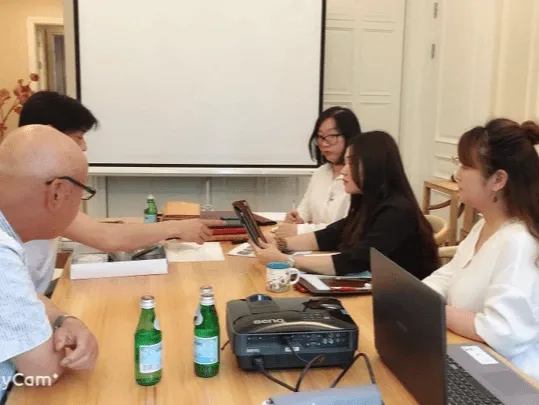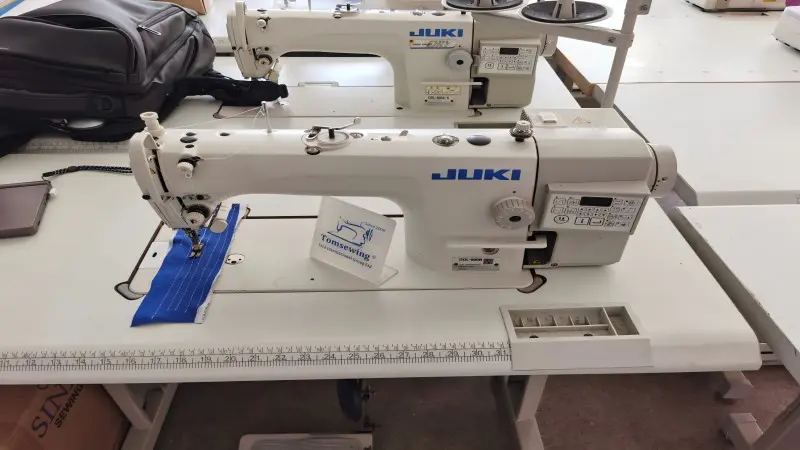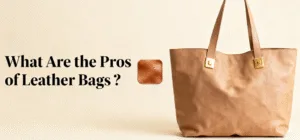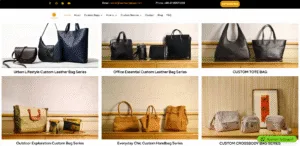Creating a custom bag starts with more than just choosing colors and logos — it begins with a well-crafted custom bag design sample. A high-quality sample brings your idea to life, highlights potential issues early, and ensures the final product meets your expectations in both function and appearance. Understanding the sampling timeline for bags is essential for planning ahead and staying on schedule.
As an experienced sample bag manufacturer, we guide our clients through the entire process — from selecting materials to producing a precise pre-production sample. Along the way, we also provide a clear sample bag price quote based on your design and requirements. In this article, we’ll walk you through the 7 essential steps of custom bag sample manufacturing — giving you the confidence to move forward with production.
Contents
Step 1: Idea & Design Submission for Custom Bag Development

The custom bag development process starts with your concept. At this stage, clients typically provide design sketches, mood boards, reference images, or detailed technical packs to communicate their vision. Whether you have a fully fleshed-out custom bag design sample or just an initial idea, our team collaborates closely with you to understand your bag’s intended use (such as travel, fashion, or business), target audience, functional requirements, and brand elements.
We also discuss preferred materials, hardware options, dimensions, and budget considerations to help provide an accurate bag sample price quote and ensure smooth progression into sample bag production. Clear communication at this stage is crucial, as it lays the groundwork for an efficient bag prototype creation and helps avoid costly revisions later.
Even if you don’t have complete technical drawings yet, our experts can assist in refining your design to ensure your concept translates well into a high-quality pre-production sample that meets both your aesthetic and functional needs.
Step 2: Custom Bag’s Material Selection

Selecting the right materials is a critical step in custom bag development, as it directly affects the bag’s appearance, durability, and overall quality. Based on your design and functional requirements, we recommend suitable fabrics such as vegan leather (PU leather), canvas, nylon, polyester, or other specialty textiles.
In addition to the fabric, we assist in choosing hardware components like zippers, buckles, sliders, and lining materials. Color matching is carefully handled to ensure brand consistency. For clients concerned about sustainability, we prioritize sourcing materials that comply with eco-friendly certifications.
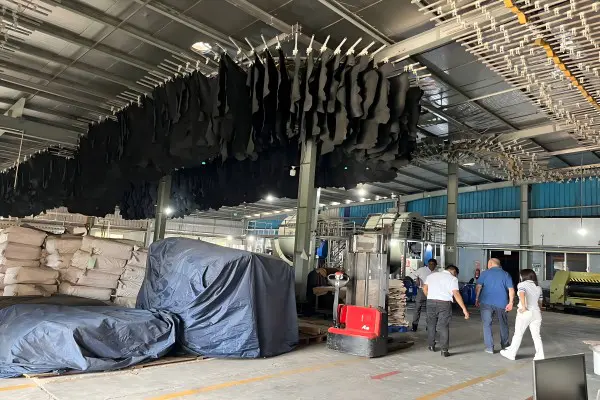
Understanding the bag sample production phase, selecting high-quality materials upfront can significantly impact the bag sample cost and overall production timeline. As a reliable sample bag manufacturer, we provide expert advice to balance cost, quality, and environmental factors to best meet your project needs. Here is a brief overview of common materials used in sample making:
| Material | Description | Durability | Eco-Friendliness | Typical Use Cases |
|---|---|---|---|---|
| Vegan Leather (PU) | Synthetic leather alternative, cruelty-free, looks like real leather | Medium-High | Often PVC-free, some certified | Fashion bags, wallets |
| Canvas | Heavy-duty woven fabric, breathable and sturdy | High | Often organic cotton available | Tote bags, casual backpacks |
| Nylon | Lightweight, water-resistant synthetic fabric | High | Recyclable types available | Travel bags, sports bags |
| Polyester | Durable synthetic fabric, colorfast and resistant | Medium-High | Recycled polyester options exist | Backpacks, luggage lining |
Sustainability has become increasingly important in today’s market. Therefore, sourcing materials that meet recognized environmental standards is given priority, such as:

OEKO-TEX Standard 100: Ensures textiles are tested free of harmful substances, safe for human health.
GOTS (Global Organic Textile Standard): Certifies organic fibers with strict ecological and social criteria.
REACH Compliance: Regulates chemicals to ensure safety and environmental protection within the EU.
LWG (Leather Working Group) certification: Focused on sustainable leather production, it ensures strict environmental auditing standards to minimize environmental impact while promoting safe chemical use and transparency in manufacturing processes.
PETA-Approved Vegan: Certifies that materials contain no animal-derived components and are cruelty-free.
Selecting materials with these certifications ensures that the custom bag not only meets quality and design expectations but also aligns with the eco-conscious values increasingly demanded by today’s consumers.
Step 3: Technical Drawing & Spec Sheet

After finalizing the initial design concept and material choices, the next essential step in the bag sample-making process is to translate the vision into precise technical documentation. This involves creating detailed technical drawings and a comprehensive specification (spec) sheet. These documents serve as the blueprint for production, clearly defining every aspect of the bag’s construction to ensure accuracy and consistency.
Key details typically included are:
Dimensions: Exact measurements of the bag’s length, width, height, strap lengths, and compartment sizes, which determine the overall size and usability.
Structure: The bag’s internal and external design elements such as pockets, compartments, reinforcements, and support features that affect functionality.
Stitching: Types of stitches (e.g., single, double, reinforced), stitch counts per inch, and seam placements that influence durability and aesthetics.
Logo Placement: Precise location, size, and application method (embossed, embroidered, printed, metal plaque) to maintain brand consistency and visual appeal.
These detailed documents act as the blueprint for crafting a precise bag prototype and preparing an OEM bag sample that meets your exact specifications. By meticulously documenting these details, the technical drawing and spec sheet reduce misunderstandings and errors during production, helping to streamline the overall manufacturing timeline.
Step 4: Pattern Making
After the technical drawings and spec sheet are finalized, the next step is pattern making — a key stage in turning a two-dimensional design into a tangible form. Here, experienced craftsmen create precise paper patterns that guide how each fabric piece will be cut and assembled. These patterns form the backbone of a successful bag mockup before production, ensuring accuracy in dimensions, symmetry, and construction.
This step is especially critical when working on a personalized bag prototype or uniquely shaped items like a custom backpack sample, where even minor inaccuracies can lead to functionality issues or uneven stitching. Sometimes, slight modifications are made to improve balance, reinforce stress points, or simplify production in later stages.
Sunteam once collaborated with a startup that submitted only a hand-drawn outline of a concept backpack. Without a spec sheet, their senior pattern maker in Bangladesh worked side-by-side with their Italian design support team to translate the rough idea into a well-balanced, production-ready pattern. The resulting prototype not only captured the essence of the original concept but also improved its functionality — leading to a successful launch with repeat orders.
Step 5: Sample Cutting & Stitching

With the patterns finalized, the next step is cutting and stitching — the heart of the bag sample production process. At this stage, skilled technicians bring the design to life by precisely cutting materials and carefully assembling each component. Depending on the material type and design complexity, both manual craftsmanship and semi-automated machinery are used to ensure structural integrity and visual accuracy.
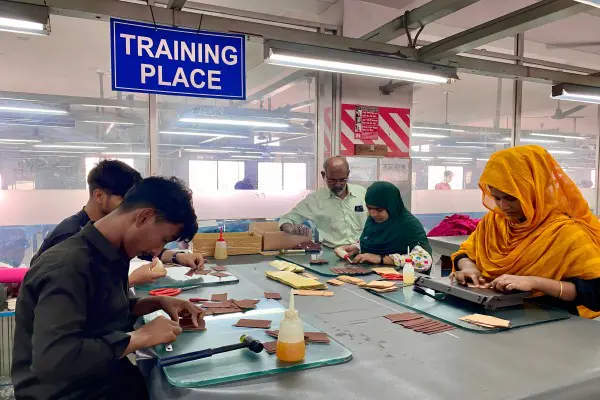
This process takes place in Sunteam’s dedicated sample workshop, where trained artisans operate advanced machinery sourced from Europe, including German flatbed sewing machines and programmable tackers. Many of these machines were selected with guidance from their Italian technical advisors, and the sewing technicians receive ongoing training from Italian experts to ensure high standards are maintained in every stitch. This combination of modern technology and hands-on expertise allows even complex features—such as reinforced corners, hidden pockets, or curved leather panels—to be executed with precision and care.
Every custom bag prototype made here is not just a functional mockup, but a showcase of craftsmanship, ready to move toward final approval.
Step 6: Quality Check & Adjustment

After the initial sample is completed, it enters a critical stage in the bag sample making process: quality checking and refinement. At this point, the custom bag design sample is thoroughly reviewed by our quality control team to ensure it meets the original specifications, both in structure and appearance. This includes checking:
Measurements — confirming all dimensions match the approved spec sheet.
Functionality — zippers, straps, pockets, and closures must operate smoothly and reliably.
Craftsmanship — inspecting stitching, edge finishing, and material alignment for clean execution.
Aesthetics — verifying that color, logo placement, and overall proportions match the brand vision.
Once internal checks are complete, the sample is shared with the client for review. Feedback is carefully recorded and used to make necessary revisions. Whether it’s adjusting strap length, reinforcing a stress point, or refining the shape, these changes help perfect the pre-production sample before mass production begins.
This step is not just about identifying flaws — Sunteam’s about fine-tuning every detail to ensure the final product aligns with the client’s expectations and brand standards. With each iteration, we move one step closer to delivering a flawless, production-ready sample.
Step 7: Sample Approval & Shipment

Once all adjustments are complete and the client is fully satisfied, the final custom bag design sample is ready for approval. This step marks the conclusion of the bag sample-making process and serves as the foundation for moving into bulk production.
At this stage, clients carefully review the approved pre-production sample to confirm that every detail — from construction and stitching to branding and functionality — meets their expectations. Once approved, the sample is either:
1. Shipped to the client for internal use, marketing photoshoots, or physical inspection before ordering.
2. Or used as a reference for generating accurate bulk production quotations and finalizing the purchase order (PO).

At Sunteam, each approved sample is securely packed and shipped with full documentation, including measurement sheets, material breakdown, and revision records if any. This ensures clear alignment between all teams — design, sourcing, and production — and eliminates misunderstandings in the next phase.
Sample approval is not just a green light — it’s a critical checkpoint that confirms the product is ready to scale confidently.
Summary
Creating high-quality custom bag samples is a crucial step to ensure the final product perfectly meets your expectations. Through these 7 carefully designed steps — from concept development and material selection to technical drawings, pattern making, stitching, quality inspection, adjustments, and final sample approval — your design vision is transformed into a production-ready masterpiece. Each stage, including the bag mockup before production, plays a vital role in refining the details and functionality of your product.
Sunteam is committed to providing not only expert sample manufacturing services but also becoming your long-term partner dedicated to excellence in every detail. Whether you’re looking for a custom leather bag sample or a personalized bag prototype, they work efficiently and transparently to bring your ideal bag designs to life.
Take the first step today and turn your ideas into reality!
📩 Contact Sunteam now for a free consultation and sample quote to kickstart your custom bag production journey.
👉 [Submit Your Design Requirements] or 📞 call their expert team directly — they’re here to answer all your questions!
Quality begins with the sample, and success is built on the details — let’s create stunning bags together!
Frequently Asked Questions (FAQs)
1. How long does the custom bag sample-making process usually take?
The entire process typically takes 3 to 4 weeks, depending on the complexity of your design and material availability. This timeline includes creating the bag mockup before production, stitching the custom leather bag sample, and completing quality checks before final approval.
2. Can I get a personalized bag prototype if I don’t have detailed technical drawings?
Yes, many clients start with sketches or rough ideas. Experienced pattern makers and designers collaborate to create a precise personalized bag prototype, ensuring your concept is translated accurately into a production-ready sample.
3. What factors affect the cost of a custom bag sample?
Sample costs depend on materials used, design complexity, hardware choices, and the number of revisions required during the bag sample-making process. Premium materials like genuine leather or advanced features can increase the custom leather bag sample.
4. How do I ensure the sample matches the final mass-produced bags?
Thorough quality control during the bag sample making process, clear technical documentation, and timely feedback loops ensure your sample—whether a personalized bag prototype or a custom leather bag sample—accurately represents the final product.

